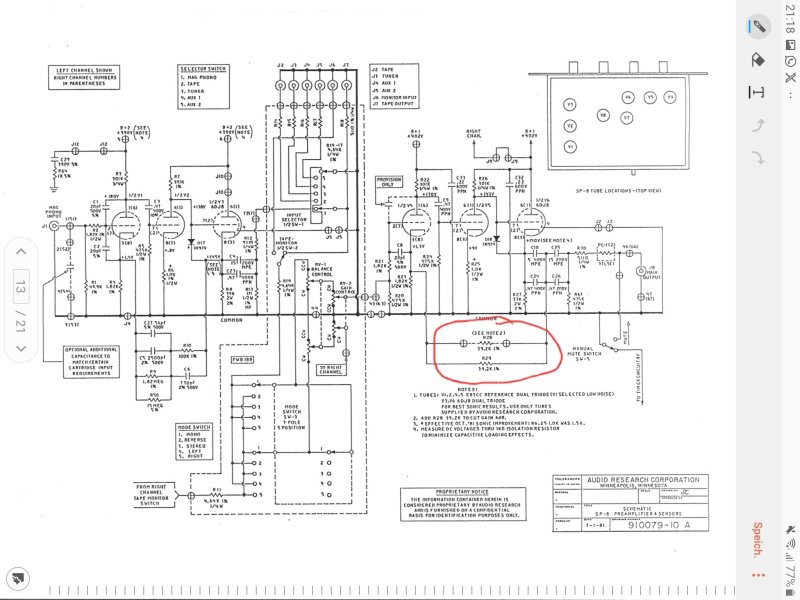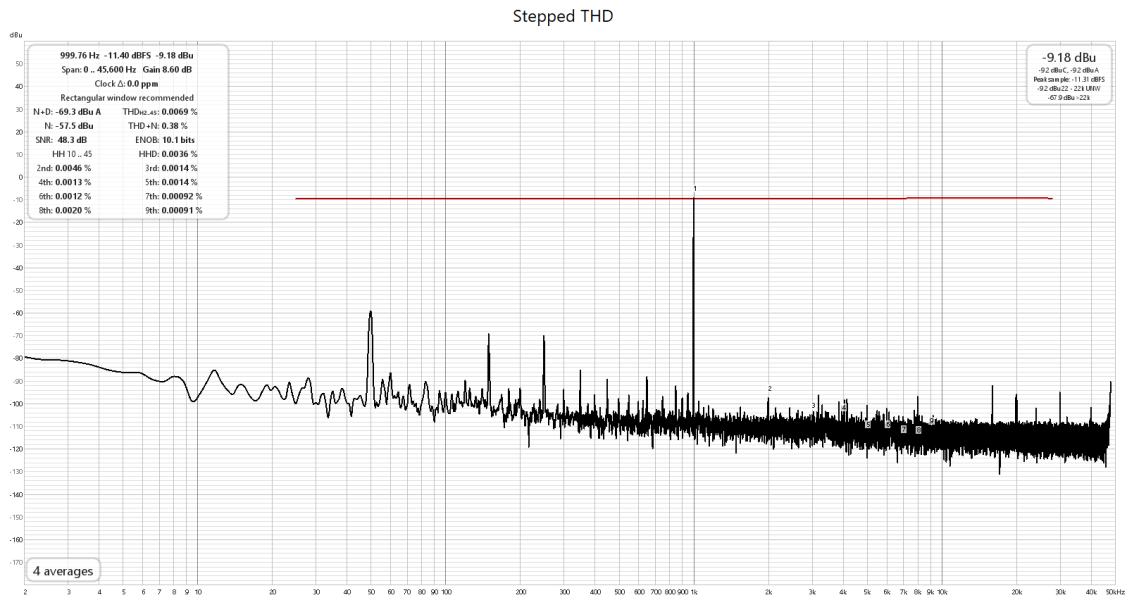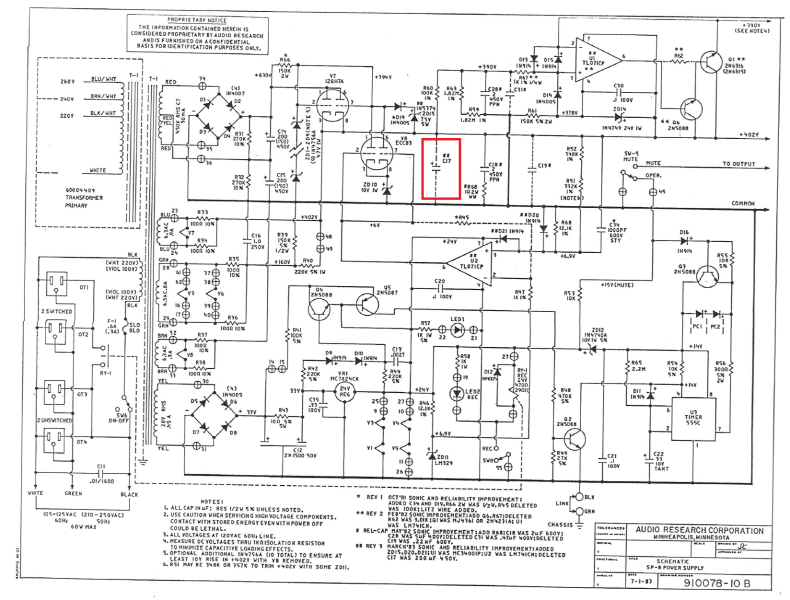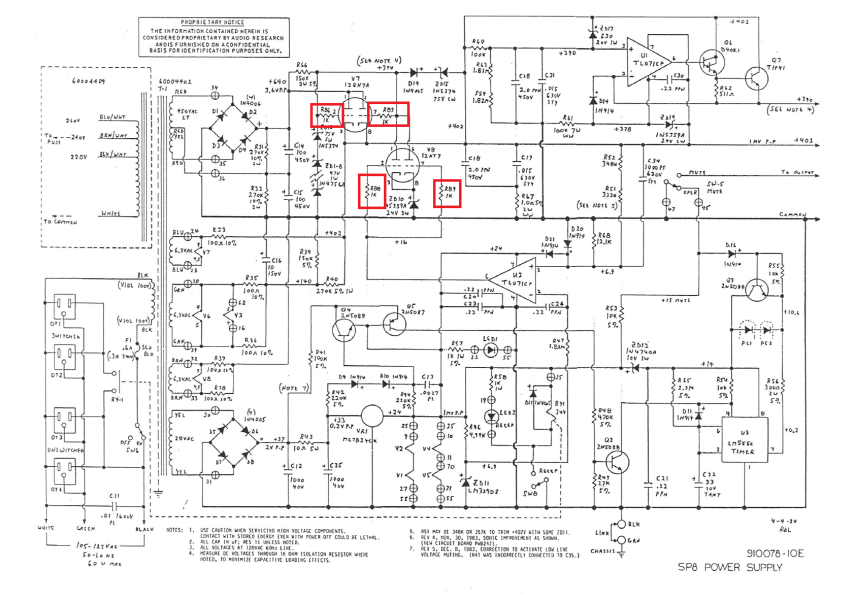Interesting, that's what I've seen before as grid stoppers before...I had some Dales handy.Don't forget that grid stoppers need to be pure resistive, thus any film types trimmed in spirals is contraproductive and might even provoke instability!
Old type carbon composit is what is needed !
Test with these resistors you will see what happend.
The schematic from the Mk 2 SP-8 has the grid stoppers as 1% tolerance. I guess that as the only carbon comps or films I can find in the UK are 5%, then 5% is good enough
Ordered some 1k2 carbon composites 0.5W and 0.25W 5%.
Last edited:





